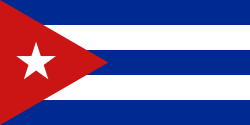George Saling
George Saling (George J. Saling Jr.; * 24. Juli 1909 in Memphis, Missouri; † 15. April 1933 in St. Charles, Missouri) war ein US-amerikanischer Hürdenläufer, dessen Spezialstrecke die 110-Meter-Distanz war.
Im Vorfeld der Olympischen Spiele 1932 in Los Angeles war der dominierende Athlet in dieser Disziplin Salings Landsmann Percy Beard. Er hatte nicht nur den Weltrekord auf der metrischen Strecke von 14,4 egalisiert, sondern auch den auf der Strecke von 120 Yards Hürden auf 14,2 heruntergeschraubt.
Die US-Trials für die Spiele fanden in Stanford statt. Hier stellte Jack Keller den metrischen Weltrekord ein und gewann die Trials vor Saling und Beard. Im Halbfinale der Spiele stellte dann auch Saling den Weltrekord ein. Im Finale standen nun diese drei amerikanischen Weltrekordler zwei Briten und dem Deutschen Willi Welscher gegenüber. Beard ging in Führung, hatte aber an der sechsten Hürde Probleme, und so gewann Saling in 14,6 vor Beard in 14,7. Dahinter kamen drei Läufer mit 14,8 in die Wertung: Der Brite Don Finlay auf Platz 3, Keller auf Platz 4 und der Langhürdler Lord Burghley auf Platz 5. Welscher wurde disqualifiziert.
Während Beard noch einige Weltrekorde lief, endet Salings Karriere abrupt, als er im folgenden Frühjahr im Alter von 23 Jahren in Missouri mit dem Auto tödlich verunglückt.
Weblinks
- George Saling in der Datenbank von Olympedia.org (englisch)
| Personendaten | |
|---|---|
| NAME | Saling, George |
| ALTERNATIVNAMEN | Saling Jr., George J. |
| KURZBESCHREIBUNG | US-amerikanischer Hürdenläufer |
| GEBURTSDATUM | 24. Juli 1909 |
| GEBURTSORT | Memphis (Missouri) |
| STERBEDATUM | 15. April 1933 |
| STERBEORT | St. Charles (Missouri) |
Auf dieser Seite verwendete Medien
Olympic Rings without "rims" (gaps between the rings), As used, eg. in the logos of the 2008 and 2016 Olympics. The colour scheme applied here was specified in 2023 guidelines.
Olympic Rings without "rims" (gaps between the rings), As used, eg. in the logos of the 2008 and 2016 Olympics. The colour scheme applied here was specified in 2023 guidelines.
US Flag with 44 stars. In use 4 July 1891–3 July 1896. Created by jacobolus using Adobe Illustrator, and released into the public domain.
US Flag with 45 stars. In use 4 July 1896–3 July 1908. Created by jacobolus using Adobe Illustrator, and released into the public domain. This flag was used during the Spanish-American War.
US Flag with 45 stars. In use 4 July 1896–3 July 1908. Created by jacobolus using Adobe Illustrator, and released into the public domain. This flag was used during the Spanish-American War.
US Flag with 46 stars. In use 4 July 1908–3 July 1912. Created by jacobolus using Adobe Illustrator, and released into the public domain.
Other version: Image:US 46 Star Flag.svgUS Flag with 46 stars. In use 4 July 1908–3 July 1912. Created by jacobolus using Adobe Illustrator, and released into the public domain.
Other version: Image:US 46 Star Flag.svgUS Flag with 48 stars. In use for 47 years from July 4, 1912, to July 3, 1959.
The Canadian Red Ensign used between 1921 and 1957.
This image has compared for accuracy (mainly colors) using an image from World Statesmen. The only change is making the maple leaves green from red. This image has compared for accuracy (mainly colors) using an image from World Statesmen. The most recent version of this image has changed the harp into one with a female figure; see [http://flagspot.net/flags/ca-1921.html FOTW
The Canadian Red Ensign used between 1921 and 1957.
This image has compared for accuracy (mainly colors) using an image from World Statesmen. The only change is making the maple leaves green from red. This image has compared for accuracy (mainly colors) using an image from World Statesmen. The most recent version of this image has changed the harp into one with a female figure; see [http://flagspot.net/flags/ca-1921.html FOTW
Die Staatsflagge der Deutschen Demokratischen Republik, vom 1. Oktober 1959 bis 3. Oktober 1990
US Flag with 44 stars. In use 4 July 1891–3 July 1896. Created by jacobolus using Adobe Illustrator, and released into the public domain.













